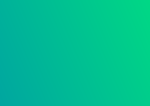Digital Distribution of Insurance: From “Time to Market” to “Time to Conversion”

With data collection, ‘the sooner the better’ is always the best answer
- Marissa Mayer
Getting online
Most of the insurance industry has — thankfully! — stopped talking about disruption. Insurtech companies and incumbents are no longer competing to see who will come out on top in the digital age. Instead, they’re working together to optimize and reshape an old traditional value chain so that it meets the needs and expectations of today’s customers.
At the C-level, this tends to start with one goal: ”We need to get our product online as quickly as we can.”
Most Insurtech companies realize that time to market is critical to succeeding. And as we have already shown, it is possible to build a completely new P&C insurance agency online in just 16 weeks.
But getting online isn’t enough
Once the honeymoon phase is over, incumbents will want a solution that actually performs well when it comes to selling insurance. It’s no longer enough to just have your product online — you want your product offered in a way that actually converts to sales.
When you look at the big picture, this is critical to the way Insurtech companies and incumbents are trying to modify the existing value chain. If online sales don’t convert effectively and provide sustainable value, the romance between the Insurtech companies and the incumbents will soon fade and we will be back to the old way of doing things.

W. Edwards Deming (Source: Wikipedia)
In God we trust. All others bring data.
Conversion is all about data
In offline distribution, agents are a bit like the black box of insurance distribution. Insurers have very little control over the way their agents interact with customers, and very few of them have a structured feedback loop providing their data from these interactions.
With online distribution, however, there is a rich flow of data, and the possibilities for systemic A/B testing are almost unlimited. This is the key to conversion online.
Working with a digital frontend allows you to build in A/B testing capabilities. From there, conversion is a matter of constant improvement — the front end is never done. It’s ”always in beta,” as Google puts it.
In one extreme case of A/B testing and optimization, the Google design team couldn’t decide between different shades of blue, so they tested 41 shades to see which performed better. Now, insurers might not get so fine-grained, but testing will allow you to find out which presentation, process, and copy improves your conversion rate and leads to increased sales.
Free Download: Embedded Insurance Index - Part I
Conversion is about much more than data
Speaking of Google, in 2009, the company’s top designer quit over that very kind of precision. In his public letter of resignation, he stated: “I had a recent debate over whether a border should be 3, 4 or 5 pixels wide, and was asked to prove my case. I can’t operate in an environment like that.”
He may not have been able to work like that, but we sure can! We’re big proponents of combining design with engineering. But we’re not the Google of insurance, nor will we ever be. Users simply have far more frequent touchpoints with Google than they do with insurance. The good news is that Penni has more data points from more customers than regular insurance companies do. We might not be able to pick the best shade of blue out of 41 options, but we can still use the data we have to optimize insurance sales.
Yes, data is the foundation of optimized conversion, but the real starting point is the hypothesis you use for your A/B testing. That’s what determines how effective your tests are and how quickly you get the right results.
Special thanks to our expert Simon Bentholm.



